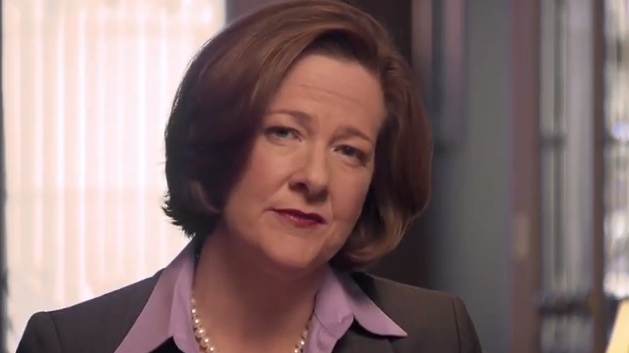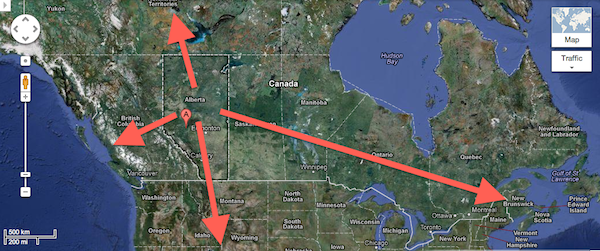
Eighteen days ago, Alberta became a have-not province.
Eighteen days ago, Premier Alison Redford appeared on Albertans television screens to warn them of the notorious “bitumen bubble” that has been keeping the price of our oil down.
Today, after eighteen days of political spin about deep budget cuts and tough economic times, it would be easy to believe that the federal transfer payments are on their way (finally, equalization will work for us!).
Of course, Alberta is not a have-not province.
Alberta’s economy remains competitive, our population is growing, and job growth is on the rise. Alberta is Canada’s economic engine.
Most of the talk is part of the government’s attempt to manage the expectations of Albertans before the provincial budget is tabled on March 7. From the opposition benches, there are always political points to be gained before a government budget is tabled.
As has been the case each year since the Alberta government began to run “technical deficits,” the earlier projected deficits will likely be much lower when the budget is tabled. As any accountant or political strategist knows, bookkeeping is closer to an art-form than an exact science.
On budget day, a lower than predicted deficit will result in the government looking like better fiscal managers than the opposition has claimed and the opposition researchers will be caught scrambling through the volumes of budget documents to fill their message box.
With this year’s budget ready to be sent to the printers, the first Alberta Economic Summit was held this past Saturday in Calgary.
Initially derided by the opposition parties as a government-sponsored public relations exercise, the day-long event brought together panels of experts from the private, public, and not-for-profit sector to discuss our province’s fiscal future.
Whether it was a PR exercise or not, it did present an opportunity for a continued discussion about the need to raise taxes in Alberta. Our government relies heavily on the sometimes unpredictable revenues from our natural resources to fill the gap created by our low taxes to fund our essential public services.
As Kevin Taft explained last year in his book, Follow the Money, if Alberta increased its tax rates by $11 billion our province would still have the lowest tax rate in Canada
———-
Onward and eastward, says Alward.
Last week, David Alward, the Premier of a real have-not province, swept into our province boasting the advantage of an eastward oil pipeline to New Brunswick’s deep-water ports as a solution to Alberta’s fiscal woes.
With almost no details or research about whether it would be financially viable, both Premier Redford and Premier Alward touted the Alberta-to-New Brunswick pipeline as progress.
Considering how many problems, both political and geographical, the province has faced with the proposed Enbridge Northern Gateway Pipeline from Alberta to British Columbia (two provinces), I can only imagine the level of political challenges that could be stirred up by an oilsands pipeline running through six provinces.


8 replies on “When did Alberta become a have-not province?”
Dave, the province needs deep budget cuts, not higher taxes. The PCs have trashed the Alberta Advantage with years of drunken-sailor spending on public sector (including MLA) salaries and benefits. http://policyschool.ucalgary.ca/?q=content/public-sector-wages-sapping-albertas-revenues
Alberta is not a have not province. And the Premier’s 8 minute address never did say that directly or indirectly. It was telling Albertans as a whole what a few already knew, that the differential in oil pricing that began stubbornly growing and staying in earnest in October, was going to put a hole in predicted revenues for the current fiscal year as well as into the next.
And if you figure Alberta is a have not province in the excellent financial health that it is in (no net debt), then tell me what you would call Ontario? New Brunswick? Then there are ten have not provinces and Canada a have-not, on-the-cusp-of-third-world-status country!
Appropriately put, we got a heads up from the Premier.
There are similarities, but dramatic differences, between 2013 and 1993. Our non-renewable resource stream is now more reliant on oil and bitumen production where in 1993 it hung on the price of natural gas, the spike in price for which allowed the net debt to be paid off during the Klein era (Good thing we did that then eh?!). As well, when the net debt got paid off in the mid ’90s, we weren’t building, expanding, repairing infrastructure, nor seeing the net in migration that we are seeing today. Those pressures alone, to add schools, highways, hospitals for the population we have now and will have in the next decade, make the increase in overall expenditures higher, particularly if you still think there are only 2.7 million of us like there were 10 years ago.
The differential didn’t just appear in the fall, it’s always been there. There’s always been a difference between what a barrel of bitumen sells for and a barrel of crude. That differential is what makes upgraders economically feasible – when it’s a wide spread, it makes economic sense to buy low, upgrade and sell high.
What has changed over the years is the amount of revenues generated by bitumen production. Previously, most of the oil and gas royalty revenues were generated by natural gas and conventional crude. When that was the case, the differential wasn’t as big a factor in the overall picture.
The real issue isn’t the low oil prices, it’s why the province – which would have known bitumen was making up a larger portion of royalty revenues and therefore the differential would have been a bigger factor – didn’t account for this before the fall.
Mark that study you quoted is a load of horse shit, read Greg Flanagan, a public finance economist, paper as he shovels that crap into bags, lights it on fire and throws it off the high level bridge.
http://www.aupe.org/documents/6ACVH
Greg Flanagan has it right. And you simply have to look at the tax regimes of the other provinces to recognize why Alberta’s dependence on resource revenues for its ongoing expenditures becomes useless whenever those revenues fall. The average Albertan pays less than 50 percent of the Canadian average for provincial taxes. Of course, because the system in AB focuses on supporting the rich, there’s no “Alberta advantage” for low-income folks who actually pay more tax here than in some other provinces. But as you go up the food chain, the degree of straight tax avoidance becomes startling (actually I’m part of it: I’d be paying three times as much tax in some provinces). The Kevin Taft book that Dave mentions ought to be required reading for Albertans. As for the “Calgary school,” they are, like the Fraser Institute, fiction writers whose “statistics” are virtually always so distorted as to be useless except to create fictions of an out of control public service that is fleecing supposedly highly taxed wealthy Albertans.
I don’t give much credibility to anything posted by AUPE. I was paid $20/h for light, uneducated work right out of high school and they sent out newsletters claiming AHS was ripping me off.
I often wonder what people in other Provinces must think when they hear us complain of our financial woes.
REVENUE PROBLEM NOT AN EXPENDITURE ONE!!
[…] is likely this is still part of the ongoing public relations campaign to manage Albertans expectations before the March 7 provincial […]